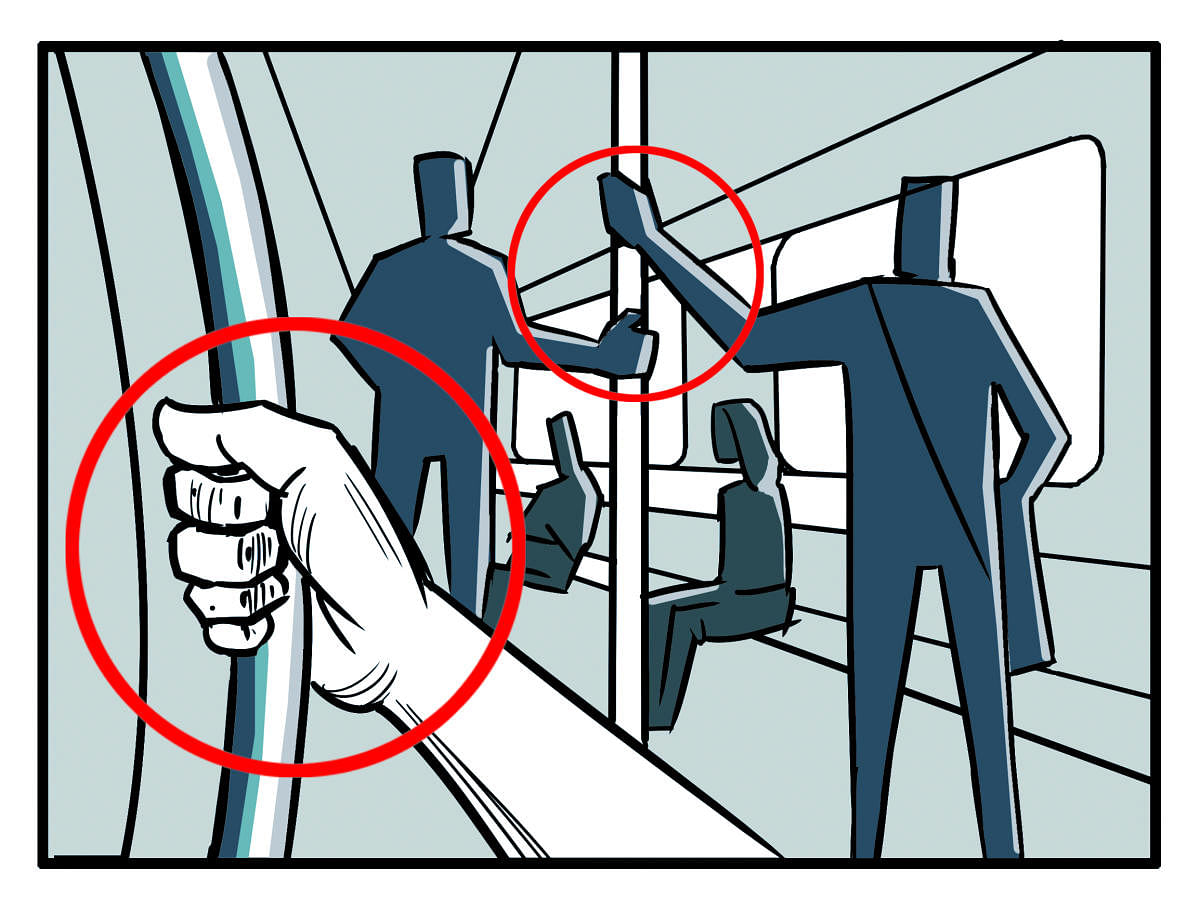Bengaluru metro rides: Risky or safe?






Battered by the pandemic, public transport revenues had dipped dramatically worldwide. Bengaluru has been no exception. But is the time ripe enough now to go for a ridership boost by relaxing the Covid-19 protocols? Not so fast, warn experts, as they cite the Second Wave wreaking havoc in Europe.
Looking for a quick return to its pre-pandemic ridership levels, the Bangalore Metro Rail Corporation Limited (BMRCL) has reportedly sought the Urban Affairs Ministry’s consent to let passengers occupy every seat inside a Metro coach. If green-signalled, this would mean no more alternate vacant seats as mandated by the Covid safety protocol.
Not a good idea
But are we ready for this yet? “Considering the possibility of a second wave, it is not a good idea to bring back public transport in full mode now. Indeed, it is a difficult situation for public transport worldwide. The alternative could be to switch to sustainable commute modes such as cycling, with the necessary infrastructure upgrades,” notes Dr Ashish Verma from the Indian Institute of Science.
Global trends, as articulated by the World Conference on Transport Research Society indicate a decline in public transport ridership for both Metro systems and buses. “Public transport was seen as a major carrier of the virus. It still poses that risk,” Verma says.
Minimising touch-points
When Metro restarted operations on September 7, 2020, safety protocols mandated minimising all the possible touch-points. Passengers were advised not to touch the Metro card on the gate sensor but just to hover it above, avoid holding onto the railings both inside the coaches and on the escalators.
However, concerns have been expressed about the possibility of virus spread from the X-ray conveyor belts at the luggage checkpoints. Metro staffers insist that the trays in which passengers are asked to deposit their bags are disinfected repeatedly. Many passengers say this is not always followed.
“Minimising touchpoints can help. But if you allow full occupancy that bypasses the social distancing requirement of 3 metres, then the risks will increase,” warns a mobility expert.
Late ridership uptick
Ridership has remained low in both Metro lines although BMRCL has reported a slight uptick in the last few weeks. The increase has been attributed to the opening of the extended Green line stretch, reopening of schools and colleges and an apparent decline in the number of Covid cases.
Currently, the combined Green and Purple line daily ridership hovers around 1.3 lakh to 1.4 lakh. The overall average ridership has been estimated to be about 1.1 lakh. This is a far cry from the 5.18 lakh daily ridership recorded before March 22, 2020, when all Metro services were suspended.
Increasing frequency
One way to strike a balance between ridership and safety would be to increase the frequency of services, suggests Nikita Luke, a Senior Project Associate with the World Resources Institute (WRI) India. “This can help reduce crowding in the Metro coaches,” she says.
The difference was clearly evident at the Majestic Metro Interchange Station during a reality check. Since the Greenline had a lower frequency, the queues at the Station were longer, and the coaches more crowded than the Purple line trains.
Commuter responsibility
Inevitably, ensuring safety guidelines cannot be the BMRCL’s responsibility alone. Many commuters agree they themselves had to take extra care. Nikita suggests posting at least one safety guide in every coach to ensure that the rules are followed. “People are gradually shedding that fear. Some don’t care anymore. Safety guides can make a difference like they do in Dubai malls.”
Communication plays a critical role too. To adapt to the new normal, a global mobility analysis platform suggests sending updates to the riders, informing them about the safety precautions being taken to ease their stress and earn their loyalty. More on that in a related story.
Deccan Herald is on WhatsApp Channels| Join now for Breaking News & Editor's Picks